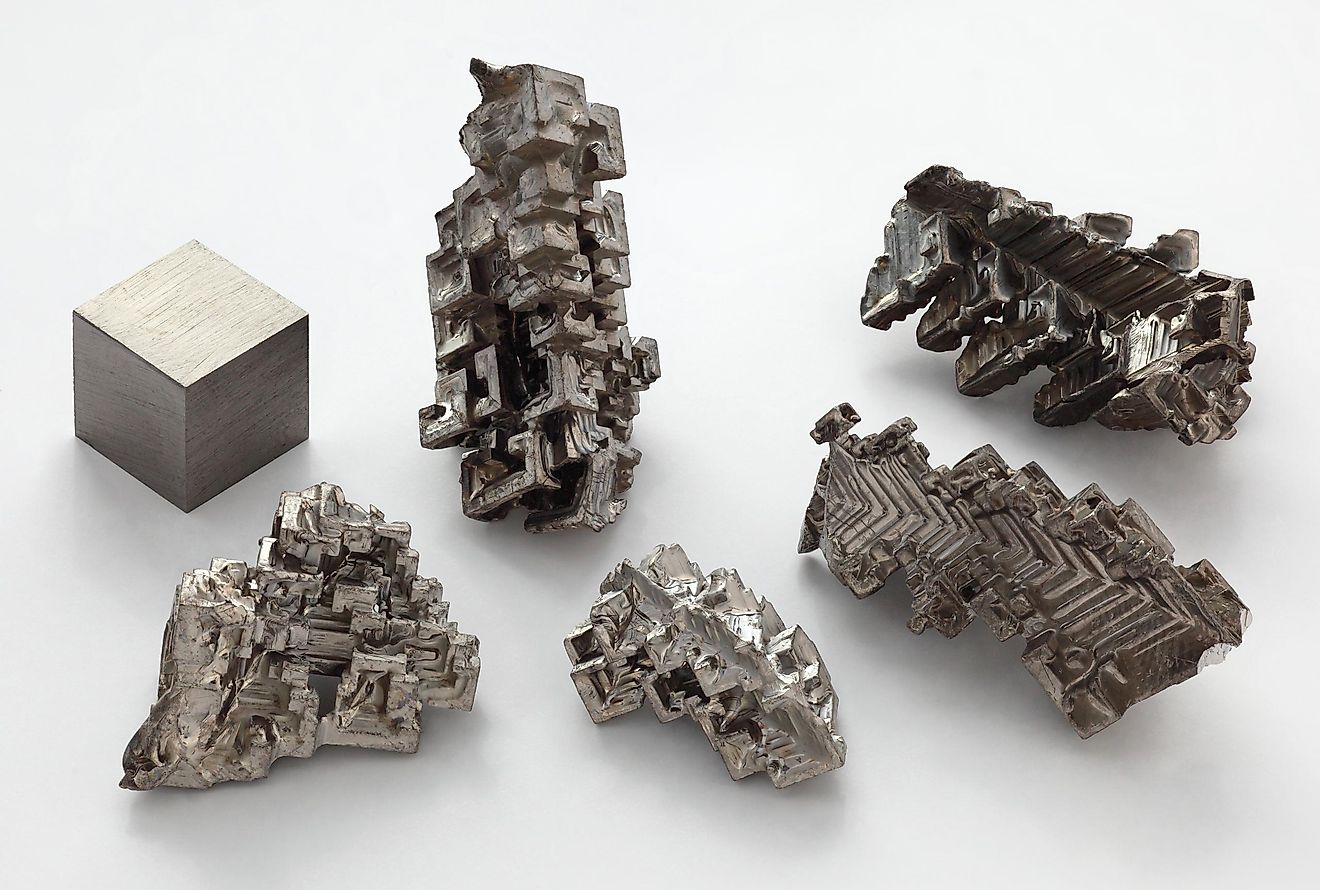Top Bismuth Producing Countries In The World

Bismuth is a brittle post-transition metal that chemically resembles arsenic. Native bismuth may occur naturally, but it is usually a byproduct from mining other metals. It is a silvery white color, but it often has a pink tinge due to oxidation. Bismuth is also weakly radioactive. Bismuth goes through the refining process as crude lead bullion. It can be separated from its impurities through a few different processes, like the Kroll-Betterton process, which separates the impurities out of the bismuth as slag. After this, the raw bismuth still needs to be reacted with chlorine gas that will convert the other metals in the bismuth into their chlorides, which leaves the raw bismuth remaining by itself unchanged.
Top Bismuth Producing Countires
1. China
China produces the most bismuth in the world at a whopping 7,200 metric tonnes. China produces almost eight times more bismuth than the next four countries combined. In China, bismuth is mined across 13 provinces and autonomous regions. Three of these regions, Hunan, Guangdong and Jiangxi, make up 85% of the countries domestic total. Most bismuth in China is produced as a byproduct of tungsten and the rest is a by-product from the vast amount of other metals, like lead and gold that China produces.
2. Mexico
Mexico produces the second most bismuth in the world at 825 metric tonnes. Mexico, like Canada and Russia, gets all of its bismuth as a by-product from mining other metals. Mexico is top five in the world in silver production and top ten in silver, lead and zinc production. This naturally results in a lot of bismuth by-product.
3. Russia
Russia produces the third most bismuth in the world at 40 metric tonnes. Russia, like Canada, gets all of its bismuth as a by-product from mining other metals like gold, lead and silver.
4. Canada
Canada produces the fourth most bismuth in the world at 35 metric tonnes. Canada gets all of its bismuth as a by-product from mining other metals, like gold, silver, zinc, lead and tungsten. Canada is top five in the world in gold, tungsten and zinc production and top ten in silver and lead production. This naturally results in a large volume of bismuth by-products.
5. Bolivia
Bolivia produces the fifth most bismuth in the world at 10 metric tons. The most important sources of bismuth are bismite, bismuthinite, and bismutits of which the Tasna mine in Bolivia is the only mine in the world to be a primary bismuth mine and to produce bismuth from bismuth ores. Outside of this mine bismuth is mined in small qualities from other ores.
The Applications Of Bismuth
Bismuth has few commercial applications and most of those involve chemical uses like in pharmaceutics, medicines, cosmetics and pigments. Bismuth alloys are used in automatic sprinklers, electric fuses and as solders. Bismuth is also used to make free machining steels and aluminum alloys for precision machining. In recent years bismuth has started to be used as a safer alternative to lead due to its lower toxicity in fishing sinkers, shot, and bullets.
Top Countries In The World For Bismuth Production
| Rank | Country | Bismuth Production (metric tonnes) |
|---|---|---|
| 1 | China | 7,600 |
| 2 | Mexico | 825 |
| 3 | Russia | 40 |
| 4 | Canada | 35 |
| 5 | Bolivia | 10 |











